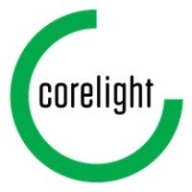

Corelight and Trend Vision One are competing cybersecurity products. Corelight is favored for its affordability and ease of integration, while Trend Vision One offers a robust feature set that justifies its higher cost.
Features: Corelight delivers strong network traffic analysis, adapting readily to open-source platforms with seamless integration capabilities. It offers high visibility for threat detection and is known for its compatibility with existing toolsets. Meanwhile, Trend Vision One shines with comprehensive threat intelligence, real-time detection, and superior analytics, offering a significant advantage to enterprises seeking detailed security frameworks.
Room for Improvement: Corelight could enhance its integration with real-time threat intelligence feeds and expand advanced threat analytics. Its customization options for dashboards and reports could be further developed. Additionally, offering more comprehensive training resources would benefit users. Trend Vision One may improve its user-friendliness in setup and navigation. Simplifying integration processes with third-party systems and reducing the complexity of tailored security configurations could enhance its usability. Moreover, expediting the learning curve for new users is an area for growth.
Ease of Deployment and Customer Service: Corelight is known for its swift and smooth deployment, requiring minimal adjustments to existing systems. It provides quick, responsive customer service, ensuring efficient issue resolution. Conversely, Trend Vision One offers a customizable deployment, catering to various enterprise needs but requiring additional time to align its advanced features with current systems. Its customer support is thorough, leveraging extensive industry knowledge to help address deployment challenges effectively.
Pricing and ROI: Corelight is recognized for being cost-effective, offering competitive pricing with substantial ROI due to its efficient integration and threat detection capabilities. Businesses often find it budget-friendly compared to alternatives. On the other hand, Trend Vision One's pricing plan includes a range of advanced features, and despite a higher investment, many businesses appreciate the value it brings by enhancing their security posture and justifying the expenditure through improved protection outcomes.


Corelight is the most powerful network visibility solution for information security professionals. We provide real-time data that organizations use to understand, detect, and prevent cyber attacks. Our solution is built on Zeek, the powerful and widely-used open source monitoring framework.
Trend Vision One offers comprehensive protection for endpoints, networks, and email with centralized visibility. It is valued for its attack surface management, real-time threat detection, integrated management, ease of deployment, and user-friendly interface.
Trend Vision One provides a sophisticated security platform combining endpoint, network, and email protection with features like virtual patching and advanced AI capabilities. Its centralized management and integration with platforms like Office 365 and Azure make it an attractive option for organizations needing streamlined workflows and efficient risk management. While it boasts robust integrations and ease of use, enhancements are needed in reporting, tool integration, and reducing false positives. Users call for better support infrastructure, faster response times, and improved threat intelligence capabilities. Despite some complexity, its AI and ML features significantly enhance threat detection and response.
What Features Define Trend Vision One?
What Benefits Should Users Look For?
Trend Vision One is implemented in industries that require endpoint protection, ransomware defense, and incident response, being flexible for both on-premises and cloud environments. It is used to monitor servers, networks, and endpoints, providing features like email protection, behavioral detection, and threat visibility. Organizations benefit from AI and ML, improving their security posture and response capabilities.
We monitor all Network Detection and Response (NDR) reviews to prevent fraudulent reviews and keep review quality high. We do not post reviews by company employees or direct competitors. We validate each review for authenticity via cross-reference with LinkedIn, and personal follow-up with the reviewer when necessary.